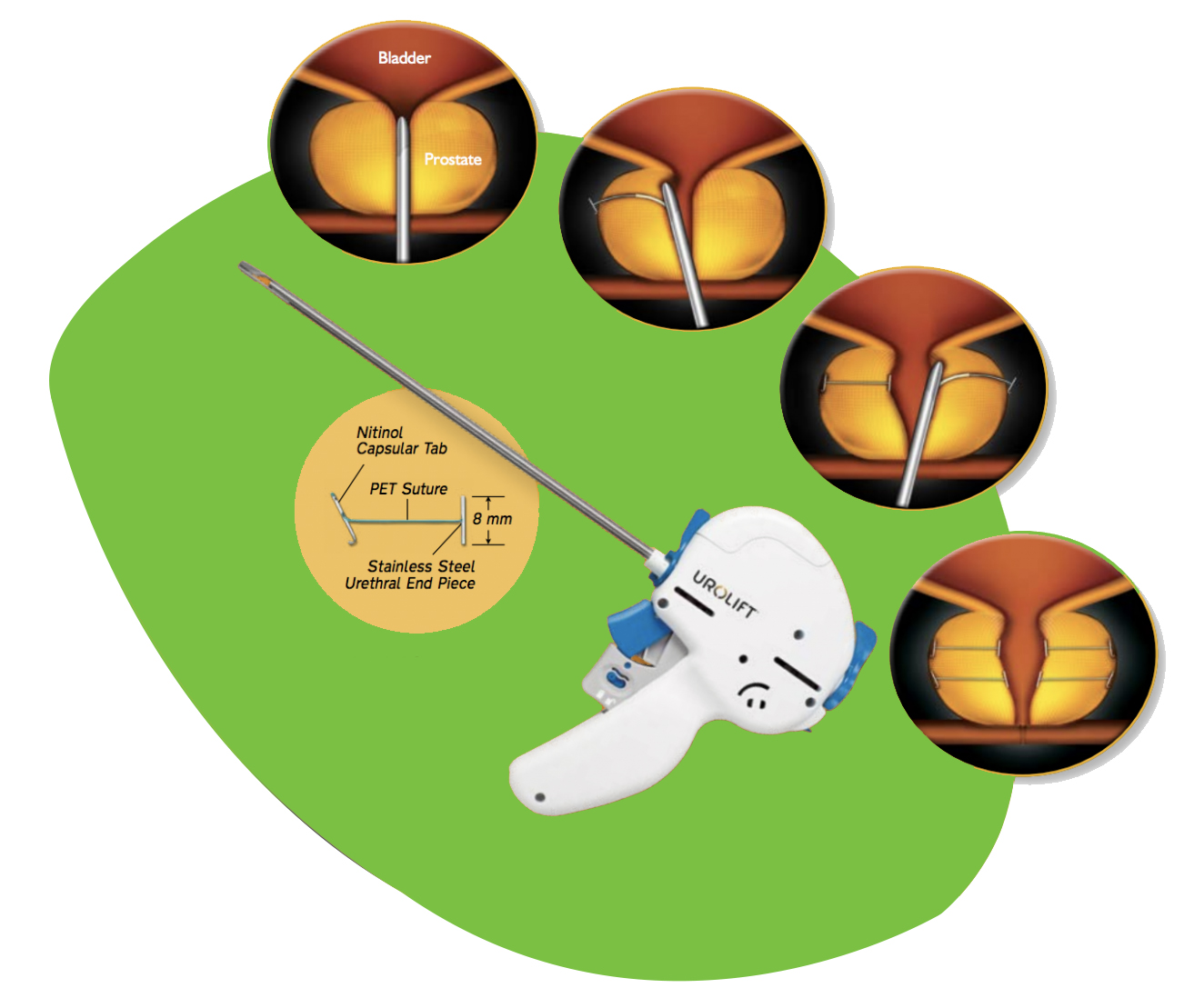
Benign Prostatic Hyperplasia, or BPH, is a condition in which the prostate enlarges as men get older. Over 70% of men in their 60s have BPH symptoms so it is very common1. While BPH is a benign condition and unrelated to prostate cancer, it can greatly affect a man's quality of life. The prostate is a male reproductive gland, about the size of a walnut, that produces fluid for semen. The prostate surrounds the urethra, which is the tube that carries urine from the bladder out of the body. As the prostate enlarges, it presses on and blocks the urethra, causing bothersome urinary symptoms such as:
If you suffer from the above symptoms, you are not alone. BPH is one of the leading reasons for men to visit a urologist2.
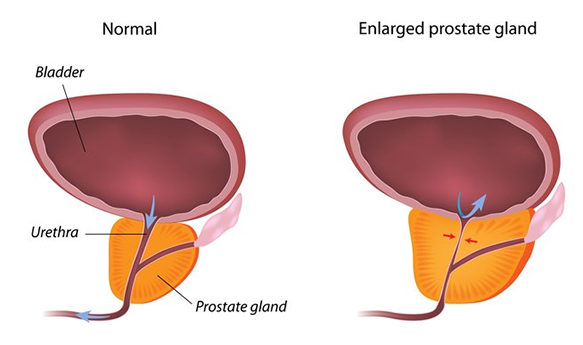
If you have been diagnosed with an enlarged prostate due to BPH, there are several treatment options available. Consult your physician to determine which treatment is right for you.

When symptoms are mild, your doctor may just monitor your condition and ask you to track your symptoms before deciding if any treatment is necessary.
Your doctor may prescribe medications to manage your symptoms. These medications include alpha blockers which relax the muscles around the neck of your bladder, making it easier to urinate, and alpha reductase inhibitors which act to shrink the prostate. While medications can be helpful in relieving symptoms for some men, patients must continue taking them long-term to maintain the effects. Some patients may suffer side-effects including dizziness, headaches, or sexual dysfunction. Some may not get adequate relief of their symptoms. Over 16% of men on medication for BPH discontinue treatment early for reasons such as being dissatisfied with side-effects or not getting adequate symptom relief.1
The UroLift® System treatment is a minimally invasive approach to treating BPH that lifts or holds the enlarged prostate tissue out of the way so it no longer blocks the urethra. There is no cutting, heating or removal of prostate tissue. Clinical data has shown that the UroLift System treatment is safe and effective in relieving lower urinary tract symptoms due to BPH without any impact to sexual function. Learn more about how the UroLift System treatment works or visit our FAQ page for more information on the benefits, risks, and recovery.
Thermotherapies are minimally invasive treatments where heat energy such as microwave or radiofrequency is applied to destroy prostate tissue. Less invasive than TURP, these treatments are generally safe, can be performed under local anesthesia and provide moderate symptom relief for some patients. Applying high heat to the prostate can cause tissue swelling and uncomfortable urinary symptoms during the healing period. Symptom relief does not occur immediately, and patients often need to have a catheter that is attached to a urine bag inserted into their bladder during the recovery period.
Laser Resection of the Prostate TURP may be performed with a laser in procedures called photoselective vaporization of the prostate (PVP) or holmium laser enucleation (HOLEP). Laser therapy lessens the bleeding risks of traditional TURP. However, since prostate tissue is still removed, there can be tissue swelling and an uncomfortable healing time. Typically, a catheter has to be inserted into the bladder after the procedure.
Transurethral Resection of the Prostate (TURP) TURP is the most common surgery to treat BPH. During this procedure, patients undergo general anesthesia, and prostate tissue is removed. TURP is often considered the “gold standard” for long-term results. After prostate tissue has been removed, the body needs time to heal. The remaining prostate tissue may actually swell and become inflamed before the desired shrinking effect occurs. Patients may suffer an uncomfortable recovery period that includes short-term problems such as bleeding, infection, erectile dysfunction, and urinary incontinence. Patients have to have a catheter that is attached to a urine bag inserted into their bladder for several days after the procedure. Symptom relief may not occur immediately, but lasts for a long time in many patients once it does occur. There can be long-term side effects after TURP such as dry orgasm (retrograde ejaculation), erectile dysfunction or incontinence (leaking of urine).
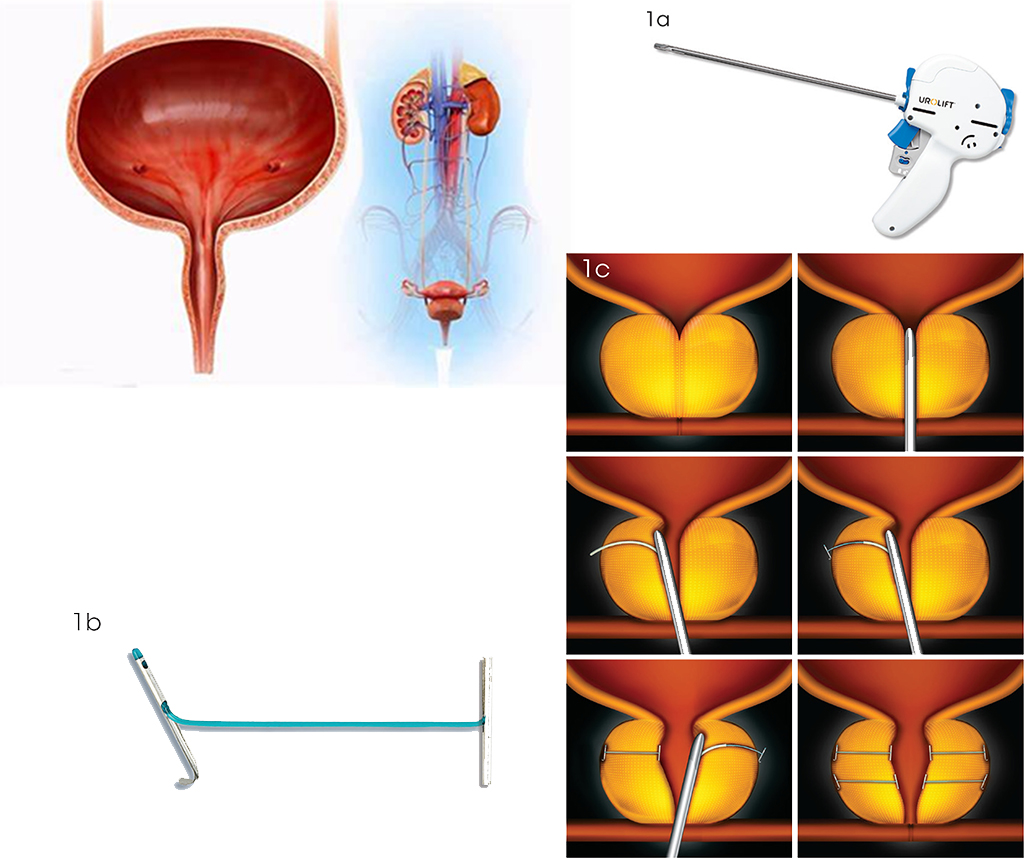
What is the UroLift System? The UroLift® System treatment is a revolutionary, minimally invasive approach to treating an enlarged prostate, or BPH, that lifts or holds the enlarged prostate tissue out of the way so it no longer blocks the urethra. There is no cutting, heating or removal of prostate tissue. Clinical data has shown that the UroLift System treatment is safe and effective in relieving lower urinary tract symptoms due to BPH without compromising sexual function1,4. The goal of the UroLift System treatment is to relieve symptoms so you can get back to your life and resume your daily activities. Most common side effects are light blood in the urine, some pain or discomfort when urinating, some increased urge to go and discomfort in the pelvis that typically resolve within two to four weeks after the procedure.
The UroLift System treatment is a straightforward procedure that is performed by a urologist. The urologist places tiny implants to hold the prostate lobes apart, like open curtains on a window, to relieve compression on the urethra. This allows urine to flow normally again. The UroLift System treatment can be done in the physician’s office under local anesthesia. Typically, patients return home the same day without a catheter.2
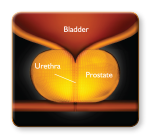
Benign Prostatic Hyperplasia, or BPH, is a condition in which the prostate enlarges
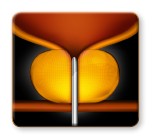
The UroLift Device is placed through the obstructed urethra to access the enlarged prostate.
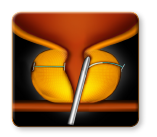
Small UroLift Implants are permanently placed to lift and hold the enlarged prostate tissues out of the way and increase the opening of the urethra. The permanent implants are delivered through a small needle that comes out of the UroLift delivery device and into the prostate.
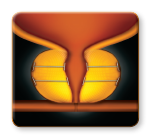
The UroLift delivery device s removed, leaving an open urethra designed to provide symptom relief.

The UroLift delivery device s removed, leaving an open urethra designed to provide symptom relief.
The UroLift® System is a new minimally invasive treatment designed to treat lower urinary tract symptoms (LUTS) due to benign prostatic hyperplasia (BPH).
The UroLift System consists of a delivery device and tiny permanent implants. FDA cleared in 2013, this unique technology works by directly opening the urethra with tiny implants that hold the enlarged tissue out of the way, like tiebacks on a window curtain. No cutting, heating, or ablating tissue is involved, making the UroLift System the first and only BPH treatment that does not remove prostate tissue and does not negatively impact a man’s sexual function.
The UroLift System is a proven treatment option for BPH patients who are looking for an alternative to drugs or major surgery. You may be considering or scheduled for a TURP/Laser treatment, or are unhappy with or have stopped taking medications. The UroLift System is appropriate for patients seeking a minimally invasive treatment and are concerned about preserving their sexual function and their quality of life.
If you and your doctor decide that the UroLift System treatment is right for you, your doctor will provide the specific, detailed information relating to your condition. In general, the UroLift System is a minimally invasive treatment that entails minimal downtime. Your doctor will use the UroLift delivery device to deploy permanent implants to relieve obstruction caused by the enlarged prostate that is pressing on your urethra. The procedure may be performed under local or general anesthesia and you may be given medication to feel comfortable during the treatment. Typically, no catheter and no overnight stay is required post-treatment.
After the treatment, almost all patients go home the same day without a catheter. There is minimal downtime post-treatment and many patients experience symptom relief in as early as 2 weeks. Patients may experience some urinary discomfort during the recovery period. The most common side effects may include light blood in the urine, some pain or discomfort when urinating, some increased urge to go and discomfort in the pelvis that typically resolve within two to four weeks after the procedure.
Sexual function has been preserved among the hundreds of patients treated in our clinical studies.1,2,3,4 This is a unique benefit of the UroLift System treatment compared with other BPH therapies such as TURP, laser, and even medication.
The UroLift Implant is a permanent implant, and the treatment is intended to be permanent. Durability has been shown to at least 4 years in U.S. clinical data,1 and results will continue to be published as follow-ups continue. One unique aspect of the UroLift System is that it does not preclude retreatment or other BPH treatments, should that be needed and desired in the future.
The implant is made up of standard surgical implantable materials: a nitinol capsular tab, a stainless steel urethral tab, and polyester suture that holds the two tabs together. Your doctor can simply remove the implant, if needed. The suture can be cut and the urethral endpiece can be retrieved with a standard grasper. The capsular tab will remain outside the prostate capsule in place.
The primary contraindications are an obstructive or protruding median lobe of the prostate and a prostate with a volume of >80cc.
Non-clinical testing has demonstrated that the UroLift Implant is MR Conditional. That means that you can be safely scanned in an MR system meeting the following conditions:
Under the scan conditions defined above, the UroLift implant is expected to produce a maximum temperature rise of 2.4°C after 15 minutes of continuous scanning.
In non-clinical testing, the image artifact caused by the device extends approximately 15 mm from the UroLift Implant when imaged with a gradient echo pulse sequence and a 3 Tesla MRI system.
Patient implant cards are provided to inform the patient that the UroLift implant is MR Conditional and can safely be scanned only under specific MR conditions.
If you have any questions about MRI safety, please consult your doctor.
No. The implants are placed on the anterior (front) side of the prostate, and a DRE is conducted on the posterior (back) side of the prostate. The implants are not expected to interfere in a DRE.
Over 950 patient-years of clinical data has been presented in peer-reviewed publications to date demonstrating that the UroLift System is safe and effective. Clinical studies have been conducted in the United States, Canada, Europe and Australia.
The first step is to make an appointment with your urologist to determine if you
are an appropriate candidate for the treatment. Your physician’s office staff can work with you and your health plan to learn more about your healthcare benefits specific to the UroLift implant procedure.
Yes, all Medicare arriers provide benefits for the UroLift System when medically necessary. Discuss the UroLift System with your physician to determine if the UroLift treatment is an option for you.
A urologist, a doctor who specializes in the treatment of diseases of the urinary system and sex organs, uses the UroLift System to treat urinary symptoms due to BPH. The urologist completes comprehensive training prior to using the UroLift System. Find a UroLift System doctor.
The UroLift System is available for sale in the United States, Europe, Canada and Australia.
NeoTract, Inc. manufactures the UroLift System. The company is based in Pleasanton, California.
BPH is a very common condition and is one of the leading reasons for men to visit a urologist. Whether you have just started experiencing symptoms or if you've tried various medications or even surgery, there are a range of treatment options available. Before you visit the doctor's office, you can take this BPH Symptom Quiz, designed by the American Urological Association, to determine the severity of your symptoms. We will discuss your symptoms together to decide which treatment option is best for you. Schedule an appointment today to discuss your BPH symptoms with us.
The Urology Center of Southern California is a single-specialty urology group which was founded in 1985.
Copyright © 2024 All Right Reserved By UCOSC.